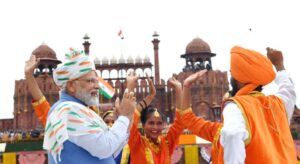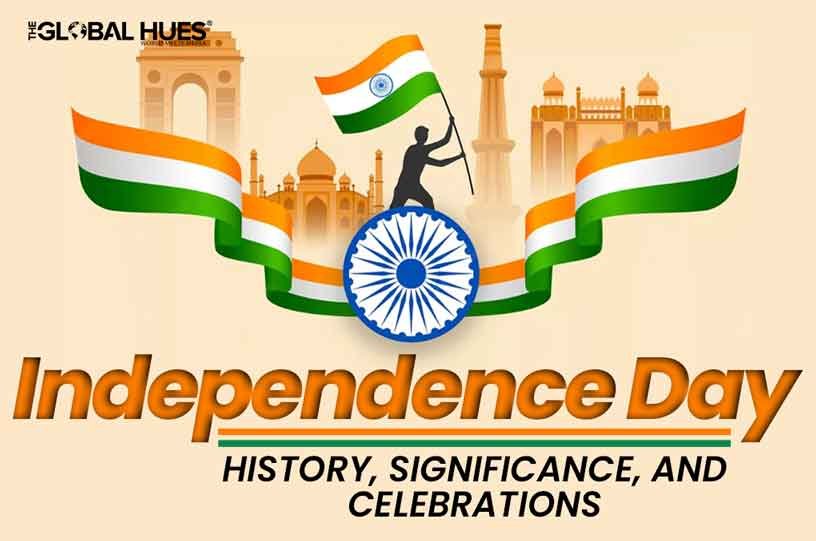15th of August 1947 is a day etched with golden letters in the history of India. It marks the dawn of a new era, a day of freedom, achievements, valour, and victory. As we approach this year’s 76th Independence Day, the entire nation gears up to celebrate the spirit that has shaped our great land- India.
Let’s try to understand the significance attached to Independence Day, why we celebrate this day, which historical sites are related to this day and how you can contribute to this independence day.
What is the significance of Independence Day?
Britishers took control of India in 1757 and ruled over the nation for 200 years. After the East India Company ruled over the nation for 100 years, India came under direct British control following the Indian Rebellion of 1857. The British rule sparked widespread protests in India. Subsequently, the nation’s history has been characterised by independence movements that ultimately succeeded in expelling the British from the country.
On August 15, 1947, India achieved independence from British rule after a long and arduous struggle for freedom. After years of civil disobedience, struggles and the efforts of several freedom fighters, India became free from the clutches of the Britishers.
On the eve of independence in 1947, Jawaharlal Nehru, the first Prime Minister of independent India, delivered his iconic “Tryst with Destiny” speech, emphasising the significance of the moment and expressing hope for a new era of peace, progress, and prosperity for a new India.
15th August is the day when each Indian remembers the contribution made by prominent figures such as Mahatma Gandhi, Subhash Chandra Bose, Jawaharlal Nehru, Maulana Abul Kalam Azad, Sardar Patel, Khudiram Bose, Dr Rajendra Prasad, Bhagat Singh, Lala Lajpat Rai and many more.
How do people celebrate Independence Day?
Independence Day is a national holiday in India. On the morning of 15th August, the Prime Minister of India arrives at the Red Fort. He is greeted with a general salute from the guard of honour (representatives from all three wings of the Indian Armed Forces-Army, Navy, and Air Force) along with the Delhi police.
The PM hoists the national flag accompanied by 21 honorary gunshots, followed by a stirring rendition of the national anthem, “Jana Gana Mana.” After this, the PM addresses the nation, reminding the people of the sacrifices made by freedom fighters.

Celebrations also include patriotic parades and pageants that pay tribute to the freedom fighters who sacrificed their lives for the nation. A march-past is led by the Indian armed forces and paramilitary forces, showcasing the strength of the nation.
Schools all over the nation also celebrate this day with great pomp and show. They hoist the national flag, followed by cultural programmes, including reciting patriotic songs and performing plays.
Are there any historical sites related to Independence Day?
There are many historic sites related to Independence Day. Some of them are:
- Jhansi Fort, Jhansi
- Red Fort, Delhi
- Cellular Jail, Andaman and Nicobar Islands
- Swaraj Bhawan, Allahabad
- Jallianwala Bagh, Amritsar
- Sabarmati Ashram, Gujarat
- August Kranti Maidan, Mumbai
Historical museums to learn more about Independence Day
There are many historical museums that can help you learn more about India’s independence.
-
Partition Museum, Amritsar
The partition museum is the world’s first museum that sheds light on the history of the partition of India and Pakistan. Also known as the People’s Museum, this place is a collection of personal artefacts, narratives, letters and some original documents from that era.
-
Gandhi Memorial Museum, Ahmedabad
As the name suggests, Gandhi Memorial Museum is a custodian of Mahatma Gandhi and his life during the freedom struggle in India. You can take a look at different documents, manuscripts, books and more to know about his beliefs and principles. This is a perfect place to know about the great freedom fighter.
-
Netaji Research Bureau, Kolkata
Netaji Subhash Chandra Bose has played a very significant role in the freedom struggle of India. This museum located in Kolkata has archives of Bose reflecting on his life, principles and beliefs.
-
Maulana Azad Museum, Kolkata
This is the place where Maulana Abul Kalam Azad lived the longest until his last breath. It is a house-turned-memorial. This place holds great significance as this is where he decided to move ahead with the Quit India Movement. This museum has a wide collection of photographs, personal artefacts, papers and other narratives about Maulana Azad.
Are there any traditional dishes associated with Independence Day?
On this independence day, you can try these five traditional foods at home:
- Moong Dal Kachori
- Vegetable Biryani
- Jalebi
- Motichoor Ladoo
- Potato and Peas Samosa
Special Dish: Tiranga Barfi
Tiranga Barfi or Tricolour Barfi holds a special value. It was first prepared by Shri Ram Bhandar in Thatheri Bazaar of Varanasi in 1942 to arouse nationalist sentiments during the Quit India Movement. The barfi was a non-violent way to show respect, unity and love for the nation. You can surely try making this dish this independence day.
How can I contribute to Independence Day celebrations?
Here are certain ways through which you can contribute your part this independence day:
Visit Red Fort and Attend The Flag-Hoisting Ceremony
If you live in Delhi or nearby Delhi, you can plan to attend the flag-hoisting ceremony at the Red Fort. To attend the event, you need to have a valid government identity proof and buy the passes which are easily available online as well as offline.
Watch Patriotic Movies
There are many movies made by filmmakers that showcase the struggles and sacrifices made by the freedom fighters for the nation. You can watch:
- Border
- Gandhi
- Lakshya
- Legend of Bhagat Singh
- Rang De Basanti
- Mangal Pandey
Read Books Related to India’s Freedom Struggle
If you love to read books, you can spend the day reading patriotic books. You can read:
- ‘A Flag, A Song, and A Pinch of Salt’ by Subhadra Sen Gupta
- ‘India After Gandhi’ by Ramachandra Guha
- ‘From Plassey To Partition: A History Of Modern India’, by Sekhar Bandopadhyay
- ‘India: A History’ by John Keay
- India’s Struggle For Independence by Bipin Chandra
- India Wins Freedom by Maulana Abul Kalam Azad



